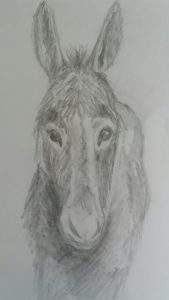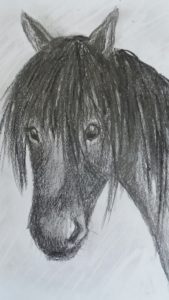Thinking about death can still be a taboo subject, and worrying about what would happen to beloved pets in the event of one’s death is also difficult for some people. Traumatic news such as being diagnosed with a serious illness, or advancing old age will sometimes bring such thoughts into focus, but does it make sense to consider this issue while you’re fit and well so that your pet’s future is secure should the unexpected happen? I first thought about this when I took on the care of a young grey parrot. Even though I was only in my thirties, research into parrot care revealed that my new avian companion could well outlive me! So I looked into what I could put in place to guarantee the bird’s care should I die before him, and since then I’ve done the same with all our pets.
Some people are fortunate enough to have the reassurance that their family would take on a pet if necessary. However, sadly, I have come across cases where things haven’t worked out in such circumstances, leaving the cherished pet of a deceased guardian in a vulnerable situation. Whatever you decide, it makes sense to keep a clear note of your pet’s daily needs, their likes and dislikes and your vet’s contact details in an easy-to-find place in the house.
If this securing your pet’s future is something you wish to do, there are a number of UK charities which offer a scheme to ensure that your pet will be entrusted into their care should you die before them. Some organisations have specific criteria and may not accept a pet because of certain issues, but other charities may well be more flexible. Generally you will need to include your wishes in your Will or to add a Codicil, but as the charity concerned will most likely advise you on the relevant wording to use, this is straightforward.
Below are some organisations which offer a scheme at the time of writing this blog:
The Cinnamon Trust (CT) – has two homely sanctuaries and a national network of volunteers who kindly volunteer to foster on a long or short term basis. The pets who come into the charity’s care remain the organisation’s responsibility for the rest of their lives whether they go to a foster home or are placed in one of their two lovely sanctuaries. They take mostly cats and dogs, and you will have needed to have had the pet for at least six months before you register them, giving you a chance to build up a clear picture of your pet’s particular needs. They require that your Will states the intention for any pets you have to go to the CT in the event of your death, and they provide the simple wording for this to be included or added as a Codicil. The charity also offers support in other ways to help older or terminally ill people keep their pets at home as long as possible: https://cinnamon.org.uk/
The Blue Cross – run a scheme called, ‘Pet Peace of Mind – love and care for your pet after you’ve gone’. You can register up to four pets, which could be a dog, cat, horse, rabbit, chinchilla, degu, gerbil, guinea pig, hamster, mouse or rat. Their Welcome Pack also gives information on what to include in your Will. There is a lot of helpful information on their website covering many questions which you may have: https://www.bluecross.org.uk/pet-peace-of-mind
The RSPCA runs a ‘Home for Life’ scheme. They will take on most pet breeds. Animals will be taken to the nearest RSPCA shelter and assessed for the purpose of finding them a new home: www.homeforlife.org.uk
Cats Protection can look after your cat in the event of your death. They can also provide Emergency Cat Care Cards for pet owners to carry to alert emergency services that you have a pet that will need to be taken care of should you be taken ill. Their legacy pack can be requested via this link: https://www.cats.org.uk/what-we-do/catguardians/catguardians-qanda
The Dogs Trust has a Canine Care Card scheme which means if you pass away or become seriously ill and you’re no longer able to look after your dog, they will be taken care of by the Trust who will look for a suitable new home: https://www.dogstrust.org.uk/help-advice/dog-care/canine-care-card
Redwings Horse Sanctuary run a ‘Home in the Event of Death’ scheme, which means you can secure your horse’s future should anything unforeseen occur. There isn’t much information on this on their website so you would have to get in contact with them to find out more: https://www.redwings.org.uk/can-i-leave-you-my-horse-my-will
Here are a few more things to think about once you have put your plans in place with your chosen organisation:
- Let your family, friends and the Executor of your Will know that you’ve registered your pet with the charity, and where the relevant documents are kept.
- If you can, arrange for the temporary care of any pets by someone you trust and who could access them without delay until the pets can be transported into the care of the relevant organisation.
- Keep a note in your purse or phone to show you have pets and who needs to be contacted in the event of an accident or sudden serious illness.
- Remember to update the charity with any changes in your pet’s day to day care.
In my experience of doing this for various pets over the years it doesn’t take much time and effort, but it brings a long-lasting peace of mind knowing that a beloved companion animal’s welfare will be secured should the unexpected happen.



